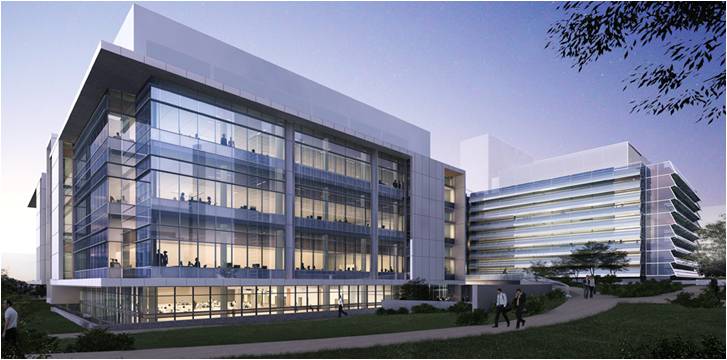
Fig. B1 - National Institutes of Health
Porter Neuroscience Research Center, Phase II Rendering
The National Institutes of Health is committed to integrating the practice of sustainable building design and construction to all its facilities. In addition to meeting the Federal mandates and regulations set upon Federal Agencies, this commitment reestablishes the underlying mission of NIH.
Green or sustainable building is the practice of designing, constructing, operating, maintaining, and removing buildings in ways that conserve natural resources, reduce energy and water consumption, improved the health of occupants and minimize pollution.
With this in mind, the NIH has established a sustainable building program across all if its’ campuses to guide NIH’s practices toward sustainability through the management of building design, construction, renovation, procurement, landscape, energy, water, waste, emissions, transportation, human health, and productivity.
As the NIH plans its future growth, these considerations should support planning decisions that reflect a balance of economic, environmental, and socially responsible values.

Fig. B2 - National Institutes of Health Building 01
Sustainable Building NIH Current Projects
Porter Neuroscience Research Center II
Building 3 Renovations
Federal Mandate & Regulations
Energy Policy Act of 2005 (EPACT 2005)
Energy Independence and Security Act2007 (EISA 2007)
More Information on Sustainability
Energy Star for New Building Design
Green Building Initiative; Green Globes
U. S. Green Building Council: Leadership in Energy and Environmental Design (LEED)
Whole Building Design Guide